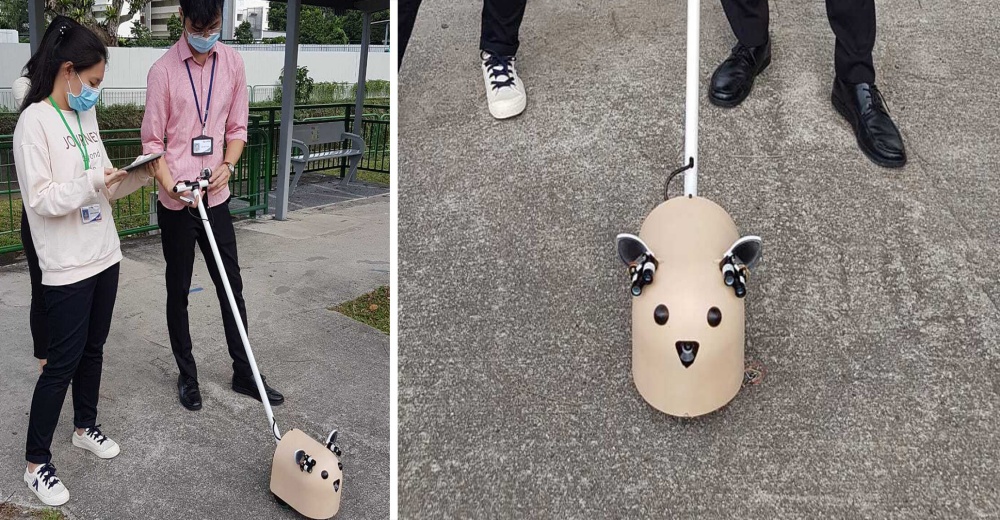Nanyang Polytechnic has invented the e-Guide Dog to help people with visual impairment navigate their way independently.
Currently, only 2 per cent of people with vision loss use guide dogs. That's because guide dogs are very costly due to the extensive training they need to undergo before they are deployed.
In addition, guide dog users need to pay for dog food and vet visits to ensure the dog is healthy and well.
The users also have to spend time reinforcing their guide dogs' training. This is additional time and money needed to take care of another living being.
The e-guide dog, on the other hand, does not require as much effort to maintain.
The e-Guide Dog has three key functions
Navigation:
The e-Guide Dog records and replays travelling paths up to an accuracy of one metre.
It is equipped with a built-in digital compass that records paths users take. The data is provided by encoders at the e-Guide Dog’s wheel. These encoders monitor the robot's wheel revolutions and steering angles to provide a more accurate guide for users.
 Credit: Nanyang Polytechnic.
Credit: Nanyang Polytechnic.
Obstacle Detection:
The robot is equipped with laser scanners that detect obstacles in the way. It then intelligently navigates its user around them, preventing accidents from occurring.
Traffic Light Signal Detection:
The e-Guide Dog is also equipped with artificial intelligence that can identify when traffic light signals turn from red to green.
The robot will then alert the user when to cross the road. This detection is a plus for the e-Guide Dog as regular guide dogs are colour blind and unable to detect colour changes.
 Credit: Nanyang Polytechnic.
Credit: Nanyang Polytechnic.
Technology has been used to develop smart canes
The team from NYP worked with Guide Dogs Singapore and its volunteers with visual impairment to test the e-Guide Dog.
Vanessa Loh, the General Manager of Guide Dogs Singapore Ltd said that the e-Guide Dog would serve as a useful mobility aid for persons with visual impairment.
The team has also been working closely with Dallon Au, a current Year 3 Diploma in Infocomm & Security student from NYP’s School of Information Technology, who was born with visual impairment.
Au expressed his excitement for the project as regular guide dogs are very costly and may not be best suited to everyone. However, he noted that it would be better if the device is more portable.
Taking in account Au's feedback, the NYP team ported the technology behind the e-Guide Dog onto canes, effectively turning them into smart canes which are fitted with sensors and encoders on wheels to provide wayfinding instructions.
Currently, the technology is only limited to indoor spaces.
The project was supported by the Enabling Lives Initiative (ELI) Grant by SG Enable and Tote Board.
Top image via eli-grant.sg
If you like what you read, follow us on Facebook, Instagram, Twitter and Telegram to get the latest updates.
